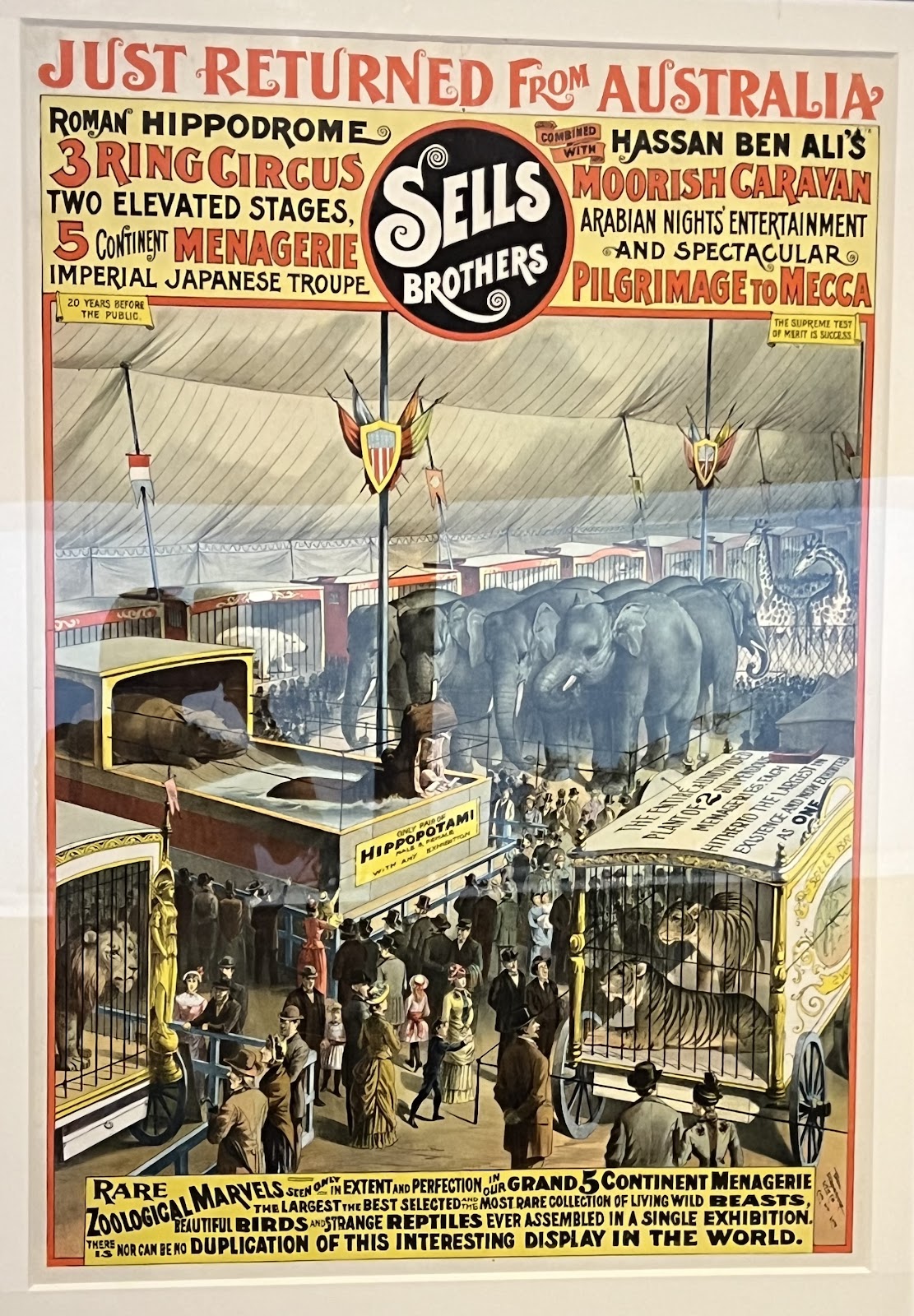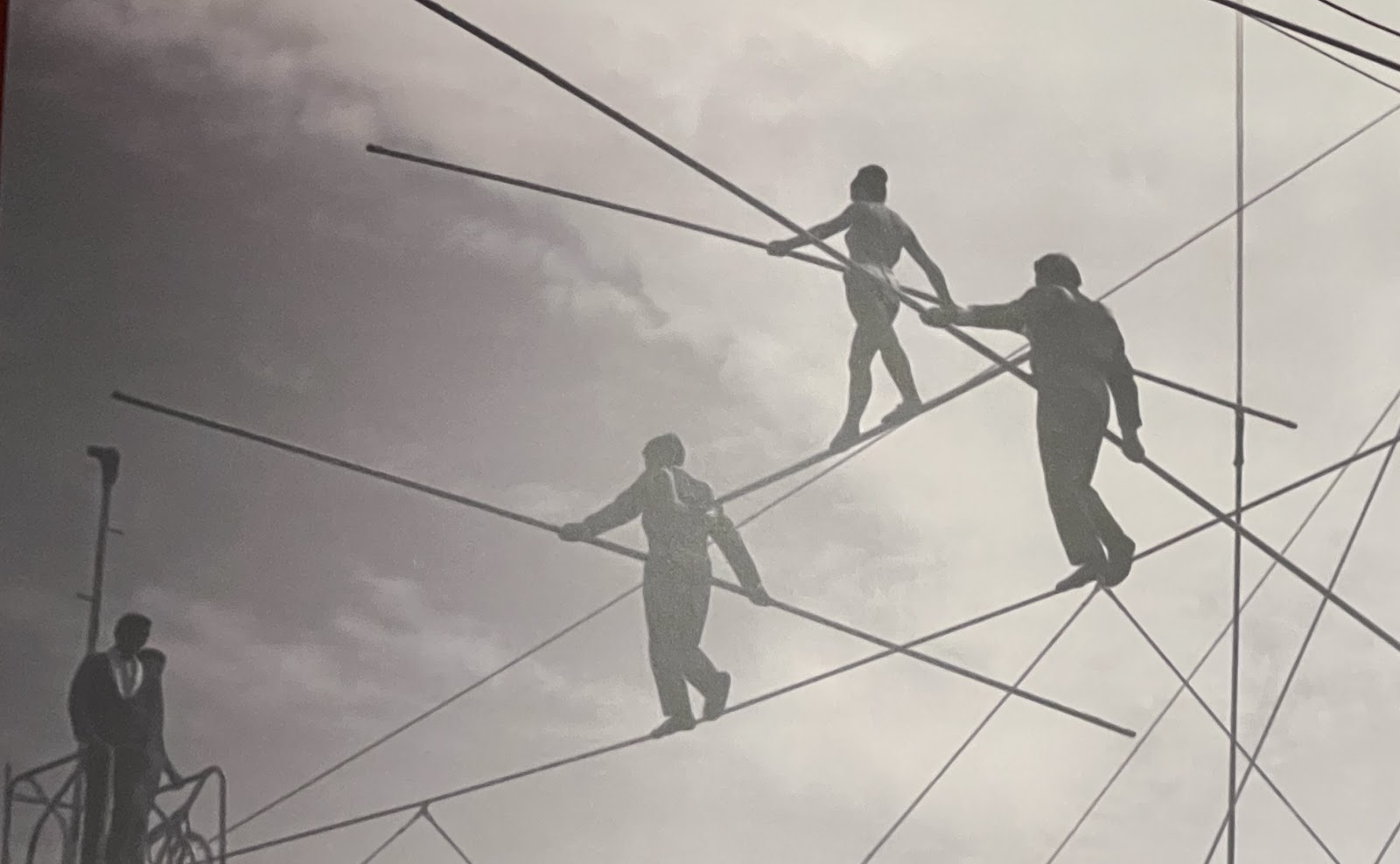Shelburne Museum
Shelburne, Vermont
Surprise! You don’t need to journey to Sarasota to see the best circus remembrance in America. I’m happy about that because I doubt I’ll ever return to Florida: too hot, too many bugs, too many reptiles, and too many Republicans. The best place to capture the atmosphere, excitement, and assorted paraphernalia of the circus is Vermont’s Shelburne Museum, 7 miles south of Burlington.
The entire 45-acre campus is a delight that includes some of the finest folk art in America, 39 buildings, 20 gardens, and a landlocked steamship, but let’s focus on the Circus Building. Instead of jabbering on, I will divide a smattering of photos into sections: circus posters and objects; the circus parade; and circus photographs.
Let’s start with the posters. There are more of them than you will see in Sarasota, they are quirkier, and they are culled from more circuses. There were nearly large ones in American history and scores of smaller ones. Here’s a good index if you want to explore some. A downside about which I’ve previously written: It’s hard to put posters under glass, hang them straight, and avoid bounce from indoor lighting. I’ve selected some that can be best captured digitally.
 |
 |
| Ye Olden Days carousel painting |
The centerpiece of the Circus Museum is it’s enormous circus parade. It is the work of two men best described as obsesses visionaries: Edgar Decker Kirk of Harrisburg, Pennsylvania who, between 1910-56 jig-sawed some 3,500 pieces. They began as a creative toy for his four kids and evolved into a delight for neighborhood children as well. The second was Roy Arnold of St. Johnsbury, Vermont. He was more systematic in his designs and had a small team of assistants who fashioned a 1” = 1’ parade stretching 525 linear feet that were carved between 1925-55. The Shelburne Museum’s collection is considered folk art mastery and I think you can see why.
 |
| The Big Top (darkened to take me out of reflection) |
 |
| Note the detail in the figures |
 |
| Tableaux were often circus features |
 |
| One could do a study of ethnic misrepresentations at the circus |
 |
| Including the all Indians are Plains Indians stereotype! |
This summer the museum also has a small photo display from Elliot Fenander of a shoot he did in Pittsfield, Massachusetts of the Beatty-Cole Brothers Circus in 1972. The circus rolled into a very wet town in 1972 in which the soil was too soggy to erect the Big Top but–as the expression goes–the show must go on!














No comments:
Post a Comment